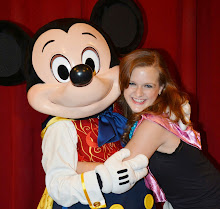We all remember this scene from the Lion King, released in June of 1994, when Mufasa gets run over by a heard of wildebeest, after trying to save Simba.
And we also all remember crying more than when we watched "Step Mom", right?
_____________________________________________________________________________________
The Disney brand has prided itself (and made billions) off its "happy, magical, dreams do come true" image. We all get excited when our favorite heroin beats the villain and our favorite princess finally marries her prince.
But with many Disney films, while we have learned about magic and experienced joy, we have also been taught some of life's hardest lessons. In most of the films, losing a loved on.
Disney shocked the animation audience in 1942, when the scene of Bambi's mother dying actually caused controversy. Parents claimed that the scene was "too harsh for a child" and "inappropriate".
But as we know, Disney has continued to incorporate death into its movies. But Why?
Just as Disney teaches us about the good in life, it shows us the bad.
The difference is...
Disney shows kids (through the characters actions) how to overcome these trials.
While many may think (or hope) that losing a parent is a very rare occurrence for a child, it shouldn't mean as a society we should be ignorant in teaching our children, even through communication channels such as film, about how to cope with death.
Often times, these films are the first glimpse of death most kids will experience. The film offers a safe, structured environment to show kids "what death is" and how to react.
After the initial death of his father, we watch Simba grow up. He not only learns that "Mufasa lives in him", but that he can rule an entire kingdom and not dwell on the tragedy of this father's death.
Perhaps, as mentioned in many marketing literature, Disney primes our kids to handle death.
Disney death scenes are remarkably emotional for being simple animation. The emotions of compassion, love, sadness, and sacrifice can all be displayed in many of the Disney death scenes such as:
- Pocahontas- When John Smith is shot
- Tangled- When Eugene "dies"
- Toy Story 3- When Andy gives the toys away at the end of the movie
- It is understood by marketing experts that the limbic system of our brains, which controls emotions, operates precognitive and automatically. Only after our limbic system has processed the emotion is it sent over to our neocortex, which handles decision making.
- Also keep in mind that somatic markers are created by such experiences, like death, and influence future outcomes of stimuli with the same emotions in the future.
The point is, maybe these Disney moments are creating a somatic marker in the minds of our children. Once the children have these somatic markers (feelings that have been connected with an event) with these death experiences, they then could retrigger the emotional reaction they had when watching the scene and the response of the character. This would then lead the neocortex to make similar decisions/behaviors like the characters.
So, if kids experience death later in life, could it trigger this somatic marker, causing the child to relive the emotions that the characters experienced and were established in this marker, and then follow through by acting in ways they saw the characters do?
I know it's a deep, and a somewhat confusing hypothesis. But it makes you wonder...


No comments:
Post a Comment